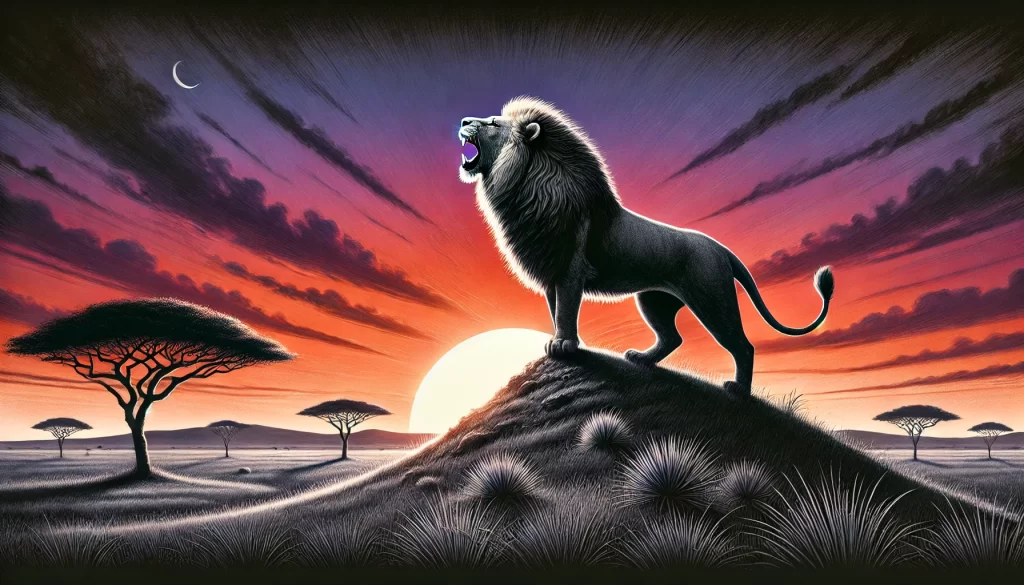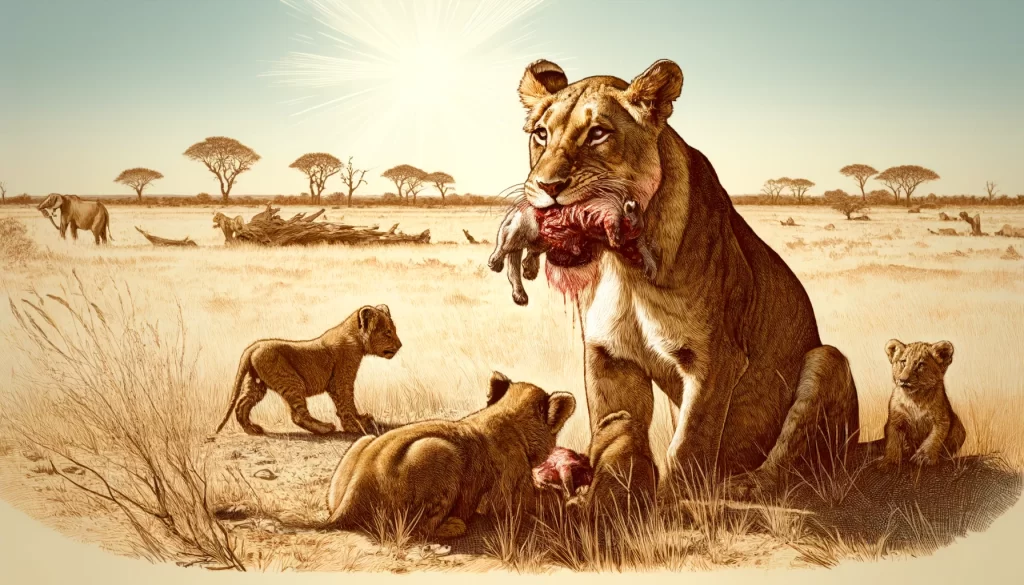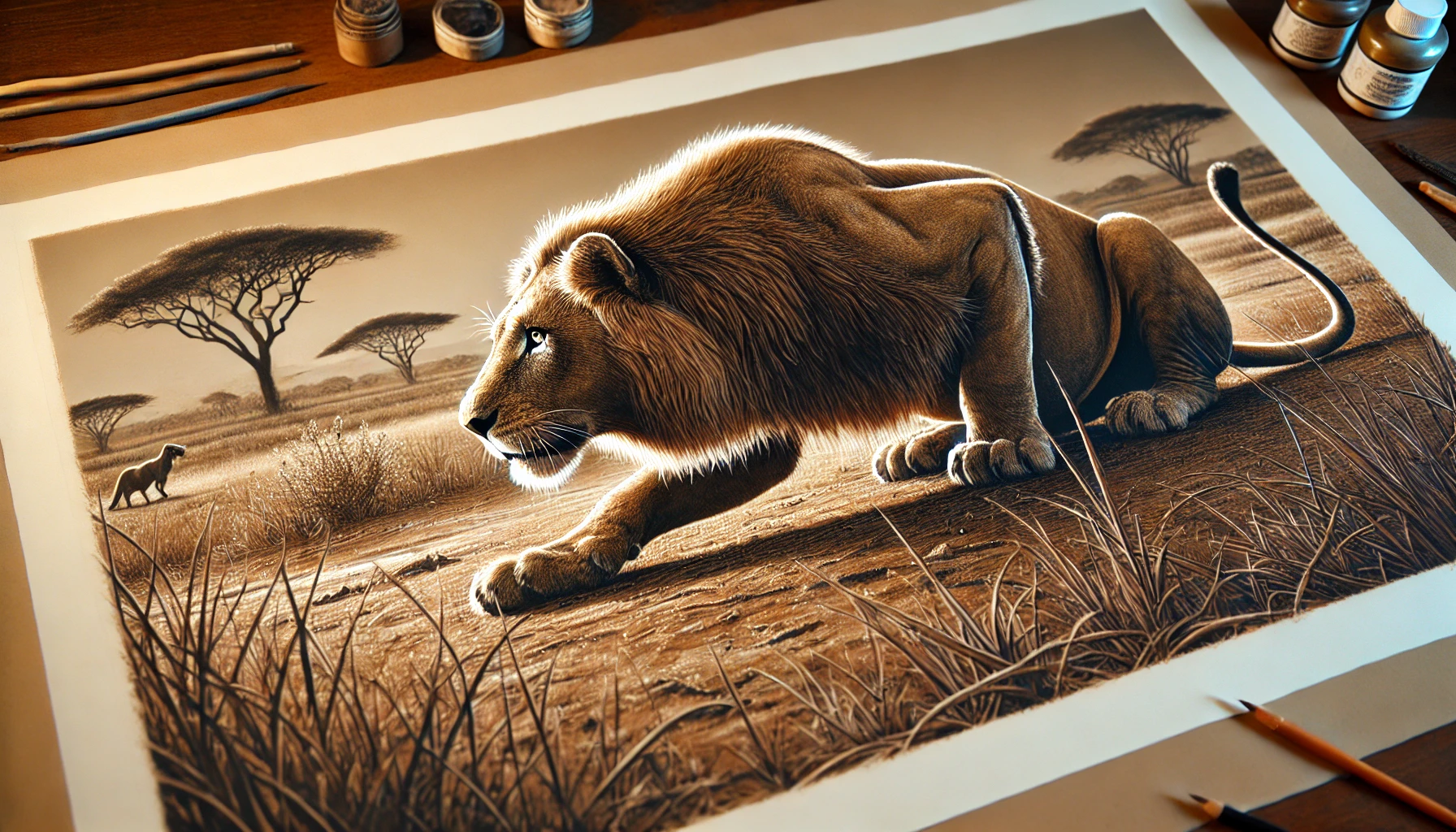Table of Contents
In the heart of the wild, the lion is the king, a symbol of strength, power, and survival. A lion searching for food is not just an act of sustenance; it’s a dramatic scene of nature’s raw power at play. Capturing this moment in a drawing is a unique way to reflect the intensity of the wild. This article delves into the art and meaning behind a lion searching for food drawing, showcasing the emotion, technique, and storytelling that can be conveyed through such an artwork.
The Importance of Wildlife Art

Why Wildlife Art Matters
Wildlife art has always been a crucial medium for bringing the beauty and brutality of the natural world into our lives. A lion searching for food drawing isn’t just a depiction of an animal; it’s a narrative that speaks to survival, struggle, and the circle of life. Artists specializing in wildlife art often aim to raise awareness about the importance of conservation. By drawing a lion in search of food, an artist can highlight the challenges these magnificent creatures face in the wild, including the impacts of habitat loss and human encroachment.
Connecting Emotion Through Art
Art has the power to connect us emotionally to the subjects it portrays. A drawing of a lion searching for food can evoke a wide range of emotions in the viewer—from awe at the lion’s strength to empathy for its hunger and struggle. The artist’s ability to capture these emotions is crucial in making the drawing more than just a visual representation; it becomes a story, a moment in time that resonates with the viewer.
The Artistic Process Behind a Lion Searching for Food Drawing
Sketching the Scene
Creating a lion searching for food drawing begins with a careful sketch. The artist must consider the composition, ensuring that the lion’s posture and expression convey the tension and focus required for hunting. This initial sketch is crucial as it sets the stage for the artwork. The lion is often depicted crouched, eyes locked on its prey; muscles tensed—a visual embodiment of the predator’s instinct and readiness.
Adding Depth and Detail
Once the sketch is complete, the artist adds depth and detail. Shadows are vital in this stage, bringing the lion to life on paper. The play of light and dark can highlight the lion’s powerful muscles, the intensity in its eyes, and the rugged terrain it navigates. Details such as the texture of the lion’s fur, the sharpness of its claws, and the environment around it are carefully crafted to enhance the realism and emotional impact of the drawing.
Colouring the Narrative
If the drawing is in color, the artist must choose a palette that complements the scene’s mood. Earthy tones often dominate a lion searching for food drawing, with shades of brown, gold, and orange reflecting the African savanna where lions roam. The colors add realism and contribute to the storytelling, with the harsh sunlight or the shadows of dusk setting the scene for a life-and-death struggle.
Symbolism and Storytelling in a Lion Searching for Food Drawing

The Symbolism of the Hunt
A lion searching for food is more than a predator seeking its next meal. It symbolizes the relentless pursuit of survival in a world where nothing is guaranteed. This theme resonates deeply with people, reflecting the challenges we all face. The lion’s hunt is a metaphor for ambition, struggle, and the fight to overcome obstacles. In a drawing, this symbolism can be subtly conveyed through the lion’s posture, the intensity of its gaze, and the tension in its muscles.
Crafting a Narrative Through Imagery
Every detail of a lion searching for food contributes to the narrative. The surrounding environment—the dry grass, the distant trees, perhaps even the hint of prey in the background—adds layers to the story. The artist’s choice of what to include or omit can guide the viewer’s interpretation of the scene. For example, a lion depicted in isolation might evoke loneliness or desperation, while a lion amid a hunt could represent determination and focus.
The Impact of a Lion Searching for Food Drawing on Conservation Awareness
Raising Awareness Through Art
Wildlife art, including drawings of lions searching for food, plays a significant role in raising awareness about the conservation of endangered species. These artworks can inspire viewers to think about animals’ challenges in the wild, from dwindling food sources to shrinking habitats. By portraying these struggles in art, artists can spark conversations about conservation and the need to protect these majestic creatures.
Also Read: If Music Be the Food of Love: Unveiling Passion’s Secret Melody
Inspiring Action and Change
A powerful drawing can move people to take action. Whether donating to conservation efforts, supporting wildlife reserves, or simply spreading the word about preserving natural habitats, art can inspire change. A lion searching for food drawing, with its raw depiction of survival, can be a catalyst for such change, reminding viewers that every action counts in the fight to protect wildlife.
A Lion Searching for Food drawing is more than just an artistic endeavor; it’s a powerful narrative that captures the essence of survival in the wild. From the initial sketch to the final touches of color and detail, every aspect of the drawing tells a story that resonates with viewers. The symbolism, emotion, and technical skill in creating such a piece make it a compelling reminder of the natural world’s beauty and brutality. This artwork reminds us of the importance of conservation and our role in protecting these magnificent creatures. A lion searching for food drawing is not just a piece of art—it’s a gripping survival scene unveiled before our eyes.




